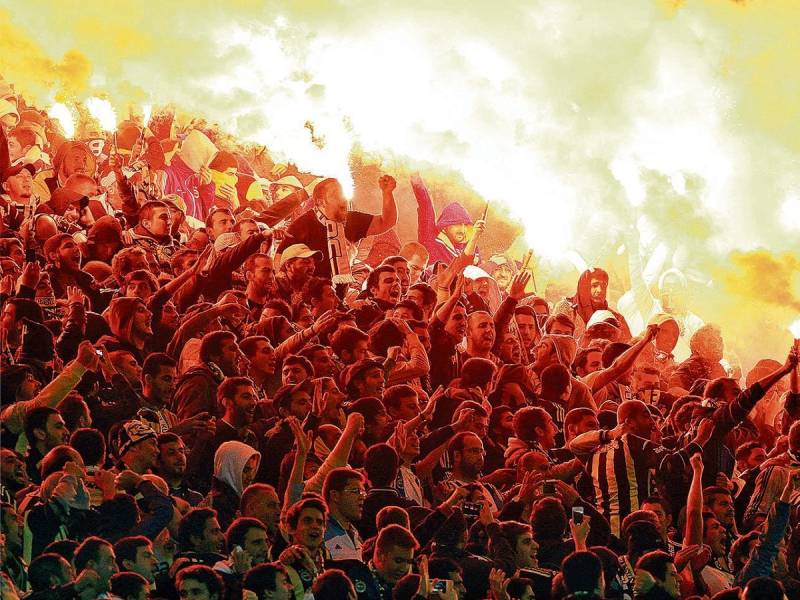
We have been discovering Istanbul this month. There is something novel about exploring new cities and walking through streets which activate curiosity and cause delight.
Millions must have walked through the streets of what is today Istanbul over millennia and yet there is much to think about when one walks the paths trodden by celebrities of their time – whether the Greeks, the Romans, the Ottomans, or the latest idols - Turkish football stars.
Upon relocating to Istanbul, we were advised to tour the Bosphorus, walk around the cobbled streets of Nisantasi and Galata and then choose a football team, whether Fenerbache, Besiktas or Galatasaray. The Turks rival the Europeans or Argentinians in their commitment to football. Everyone I have met in Istanbul seems obsessed with football. This has become even more heightened during the last few weeks against the backdrop of the Women’s Football World cup and Spain’s victory.
My colleague maintains an active football blog; our neighbours have a WhatsApp group that activates whenever Besiktas plays; and families become rivals should they support opposing teams.
Football appears to be the most competitive and popular sport in Turkey. Our landlady, who kitesurfs with an Olympic kitesurfer in Cesme. says that typically Turks are into sports of one kind or another whether it is tennis, swimming, kitesurfing or football, whether as an active participant or as a passive observer.
Football traces its roots to the latter days of the Ottoman empire. The first football matches were played in 1875 after the game was introduced by English residents.
It appears that couch-surfing Turkish football teams may provide useful insights into the country’s culture and characteristics. Football players are worshipped as are our own cricketers in Pakistan. FA fans pile into large stadiums and after matches into their cars to honk to celebrate their teams winning. Football fans are constantly tracking scores, whether over meals, convivial dinners, or at weekends – particularly when a game is on. Annual finals can be intense and charged with passion for supporters who compete vicariously through their teams.
Over 90% of Turks associate with a local team. The big three sports clubs are Besiktas, Galatasaray and Fenabache, each of whom has a unique history and place in Turkish society.
The most appealing to me seems Besiktas, simply due to the location of their home stadium on a beautiful hill overlooking the Dolmabahce palace and the Bosphorus, in a sense overlooking Asia. Besiktas is known for their ardent and organised supporters, known as Carsi after the fish markets and restaurants around the stadium. Fans on a good day hug and celebrate, but when games go the other way, they pout and drown their misery indulging in delectable fish dishes and meze.
The club draws its roots from the leftist working class. It changed its colours from red and white to black and white to commemorate Turkey’s loss in the Balkan wars. Beskitas is affectionately known as “Kara Kartallar” or the Black Eagles, and has become a formidable name over the past two decades.
Galatasaray by comparison draws its roots from a well-known high school with the same name that was established by an Ottoman poet Gul Baba. Legend has it that the Gul Baba wanted to educate the masses of Constantinople and persuaded Sultan Bayezid II to allow him to become headmaster of this school in the Galata district. It later became the Lycée of Galatasaray, with a French connection.
The founding father of the club Ali Sami Yen was determined to show that the Ottomans could play football at an international level along and establish power through the parallel of sport. Under Yen’s leadership, talent was drawn from all over the Ottoman empire and united under the colours of red and yellow (Gulbaba’s favourite colours).
The name itself is legendary – Galatasaray meaning Glory and Courage in Turkey. It is located in the Sisli district, again on the European side and known for its commitment to Yen’s values. About 30 million fans are attracted to the club’s vision and image. Some have even told me that Galatasaray is more than a club: it’s a lifestyle, with a global brand known beyond Turkey. They are the team reputed to fight for the honor and standing of Istanbul and Turkey. They were the first Istanbul club to win a European trophy against Real Madrid and have since symbolized Turkish talent and power. Its stadium can seat or stand more than 52,000 people and its Chairmen have included professors of law, millionaire hoteliers and business men. It is owned by members who have to have graduated from the high school cementing its reputation as an old boys’ club. It is so far the winner of the most trophies though this is also debatable whether the dates are since the clubs were founded or the creation of the Turkish republic in 1923.
The third of the big three teams is Fenerbache SK, or Yellow Canaries (Sari Kanyaralar), representing the Asian side. Its colours are yellow and navy. It has the reputation of being a people’s team. It was founded in 1907, in the Kadikoy district, where the ferries land from Europe to Asia. It has regularly found a place among the top of the table rankings and is considered the most popular.
It is difficult to choose between them. Once you are committed as a fan, there is no way out. You have to be loyal to your own team, right to the end, from birth to death, regardless of the team’s performance.
For Istanbul fans, football is more than a sport; it is a conviction. I have been in Istanbul for less than a month and so it is too early for me to commit myself. But I can see I will have to. To truly immerse myself into Turkey’s social variety, I will inevitably succumb to the vibrant colours reflected in the jerseys of its football teams that dominate either side of the Bosphorus.

